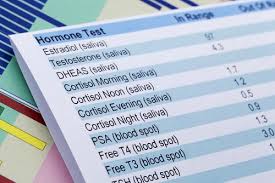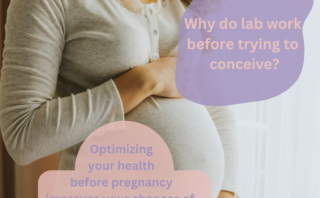So, if you are like most couples that have been struggling to conceive or even if you are just starting this journey, you probably have a binder full of tests and hormone tests have been taken, probably not even the right ones! Test after test has probably been done trying to figure out why you are not getting pregnant. Possibly you have the diagnosis of – “your test results look good,  we are not sure why you are not getting pregnant!”
we are not sure why you are not getting pregnant!”
Let me help you try to make sense of some of this testing so you can be empowered with the information that I use to analyze my client’s lab results so they can be successful on their fertility journey.
Let’s Get Started!
LH & FSH are the controller hormones of the reproductive system. These two hormones are released from the pituitary and have an effect on the ovaries. They are the signaling compounds that tell the ovaries-especially the eggs-to do their thing. LH (Lutenizing hormone) is the trigger for ovulation and helps with the development of the corpus luteum. FSH (follicle stimulating hormone) helps with the production/development of ovarian follicles (the eggs). Ideally, these two hormones should be in a 1-1 ratio. When one is higher than the other, something is usually off.
FSH generally rises when the ovaries are not responding to the signaling that the pituitary is doing. The pituitary has a negative feedback loop from the ovaries once eggs are produced. So, when FSH is signaling the ovaries but there’s no output from the ovaries, it continues increasing the signals.
That number is usually ridiculously high in menopause or premature ovarian failure, alcoholism and aging. Other factors FSH goes up is stress and poor egg quality.
Day 3 FSH should be 10 or less for ideal fertility. FSH can be low on account of PCOS, eating disorders, hypogonadism or pituitary malfunction.
Day 3 LH should be around 7. PCOS women may actually have elevated LH (sometimes a 2:1 LH:FSH ratio).
Estrogen – in particular estradiol (E2) is a necessary marker in fertility, and should be measured on Day 3. Estrogen is produced by the ovaries and also converted from adrenal hormones to testosterone to estrogen by an enzyme mainly in fat and muscle cells. So, obesity will often lead to higher estrogen levels. Poor egg quality and age also contribute to higher levels of estrogen. Below 20 ng/ml usually points to menopause. Day 3 E2 is ideal under 50 ng/ml.
Progesterone – it is important for progesterone to be measured 5-9 days after ovulation. Corpus luteum is the other shell of the egg when it is produced. The egg eventually gets released out of the ovary but the corpus luteum sticks around for a few days, releasing progesterone. This progesterone generally rises with the hope that the egg will be fertilized. If the egg is fertilized, the corpus luteum will sustain the pregnancy till the embryo can take over it’s own progesterone production.
The progesterone level should ideally be between 10 and 12 ng/ml. Low progesterone indicates lack of ovulation or poor egg quality which then lead to poor corpus luteii that may not produce enough progesterone.
Is progesterone cream the answer? Not always. If the eggs are poor quality, even if progesterone cream is given, the eggs are still poor quality! Getting to the root of the problem is important!
Anti-mullerian Hormone (AMH) – most reproductive specialists will do this test. Generally if the value is below 2, it is not so good news. This could indicate poor ovarian reserves (the number of eggs you have that are laying latent in the ovaries) and will likely respond poorly to in-vitro fertilization. Sometimes the number can be really high – above 6, and it can be a sign of PCOS and you should be screened further.
Generally the theory is that this number sees a steep decline at age 35 and that is when it becomes a good indicator for ovarian reserves. Western medicine considers this number to be a good indicator for women over 35 that are considering IVF to determine whether they are good candidates. From the Western perspective, this number doesn’t really increase after it has started its’ decline because “women are born with a limited number of latent eggs”. I have seen this number increase drastically in a matter of months to the point that they could be considered good candidates for IVF and for natural conception. I would consider AMH as a good marker to consider for evaluating fertility and then being able to make adjustments – just not taking it as something that you don’t have any power over to change for the better!
So, you can see how the timing of testing is important for having accurate, usable information. Getting to the root cause of the issue is also important for moving forward on your journey to conception. Changes can be made to optimize chances for conception. It’s important to have accurate information and clear explanations of the testing.
For more information on our services and help with testing and deciphering results, you contact us here!
For info on what tests are available – check here!





[…] The second article can be found here […]
[…] To move on to the second part of the series – click here! […]